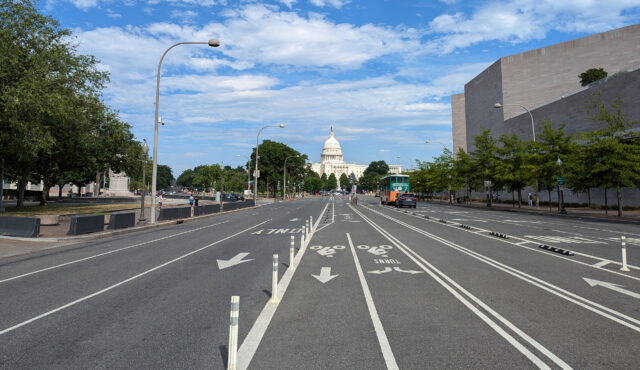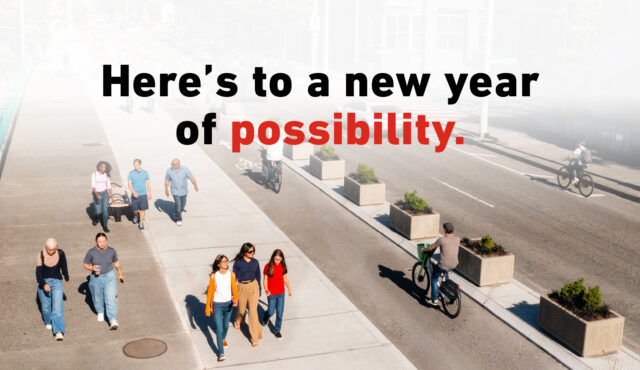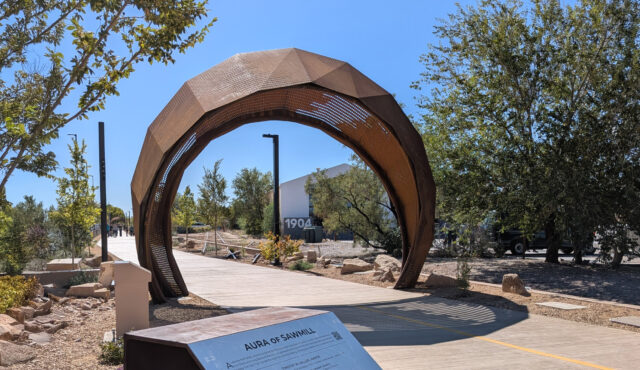
Toronto Office Director, Eastern Canada Market Lead
I think of economics as a series of choices about how to manage resources. When I look at the street in front of my house, I see a public resource dedicated almost exclusively to motorists. Most of the right-of-way is a paved road between curbs, maintained by the City of Toronto and governed by Ontario’s Highway Traffic Act. The street serves one function: accommodating cars.
Most of today’s transportation investments either passively support or actively encourage sprawl by trying to minimize travel time and maximize safety for people who travel exclusively by car. With that as our goal, we have established a transportation system that ignores everything else, and we have avoided reckoning with the second and third tier consequences of our choices.
How did we end up setting aside so much public space and spending so much money for the movement of automobiles at the expense of everything and everyone else? To say that our current transportation system simply reflects free market economics is false. We’ve made a series of choices that benefit motorists while ignoring the actual costs that we—especially society’s most vulnerable— are paying both today and over the long term. We have failed to act ethically, equitably, and empathetically, and the choices we once thought to be rational have turned out to be anything but.
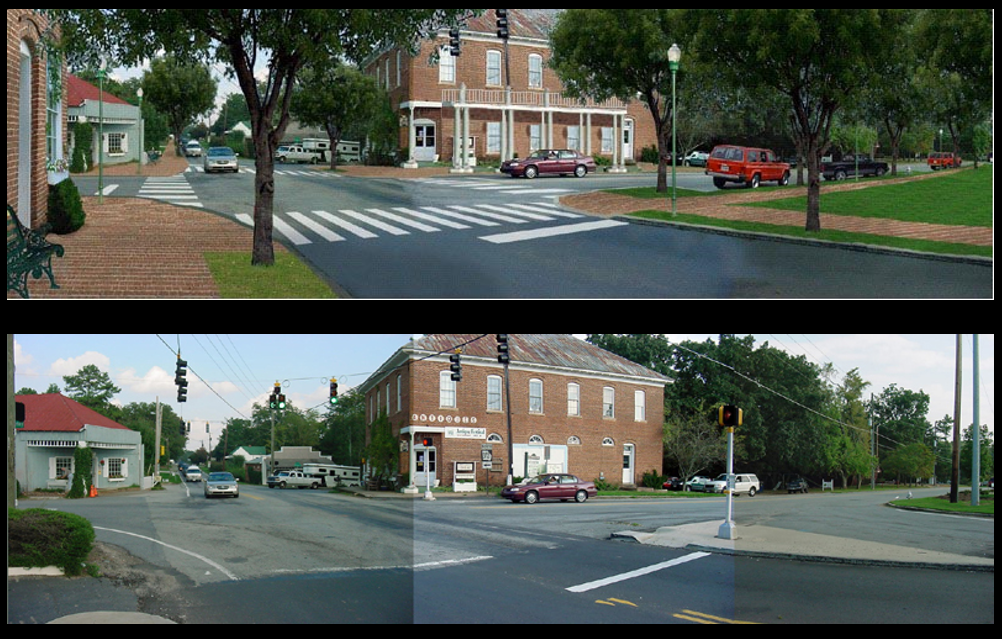
In the traditional neighborhoods (those mostly built prior to World War II) that surround many downtowns, streets that connect to the broader region have seen widenings, increased turning radii, and the creation of auxiliary turn lanes to accommodate motorists. In places where new development is going in, we’re skipping the neighborhood step and going straight to overbuilt roads. The result, among other things, has been narrower or non-existent sidewalks, infrequent crossings that are longer and that usually force people to contend with turning traffic, and cyclists, pedestrians, and transit users (i.e., the local population) left to get by with whatever is left over. There is little space for social and economic exchange—few pleasant places to walk your dog, greet your neighbors, or linger outside a store.
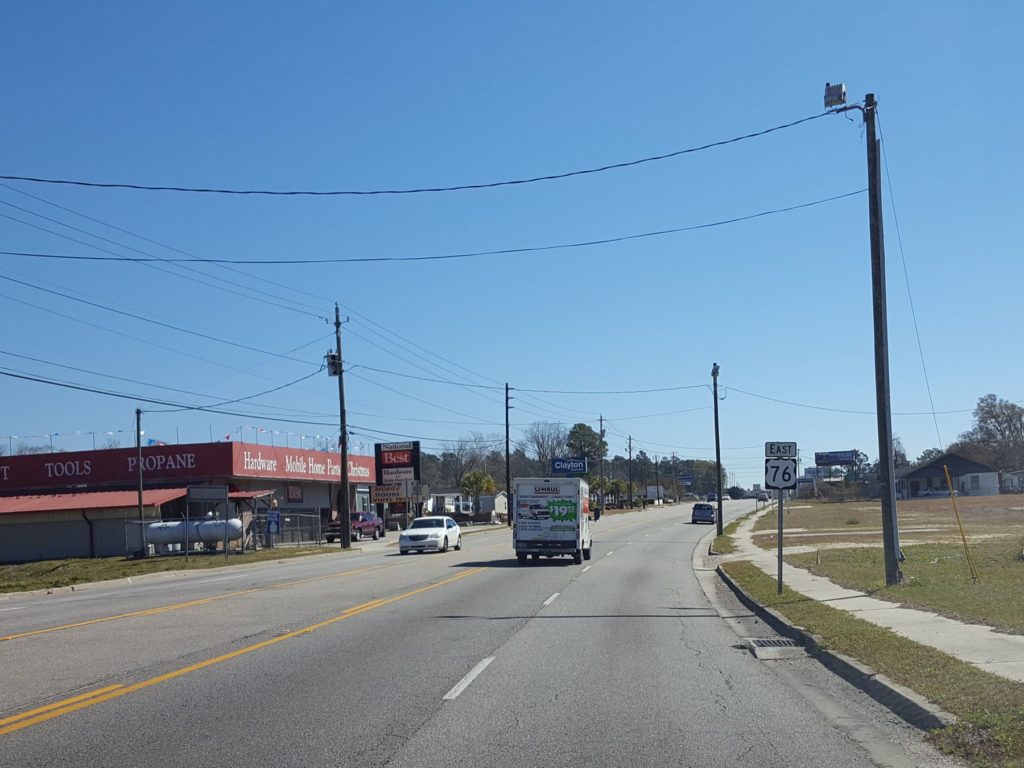
Even more disturbing, the changes have turned these streets into barriers and increased the potential for harm to those simply trying to cross the street. People who just want to cross the street are at the mercy of motorists late for work or frustrated by congestion, and outside of rush hour, wide open streets encourage speeding where a collision with a cyclist or pedestrian could be catastrophic.
Economically speaking, we have decided that reduced travel times for those traveling along these corridors (who may not even live nearby) is the outcome most worthy of our resources. We value longer trips more than short ones; we value the time of one group of people more than we do another; we explicitly favor mobility over access. The result is a reduced quality of life for the people who live in the communities these corridors pass through.
Cities are complicated places that require more than one-dimensional thinking focused on level of service, volume/capacity, and delay. When we see decisions that negatively impact the health, safety, and quality of life for residents along a corridor as “economically justified,” it means that our calculus is out of whack. Without factoring values like ethics, empathy, and equity into our decision-making equation, we get the undesirable and unsustainable results that come with accommodating cars at all costs. As transportation professionals, we need to rethink our approach and restore some balance to the system.
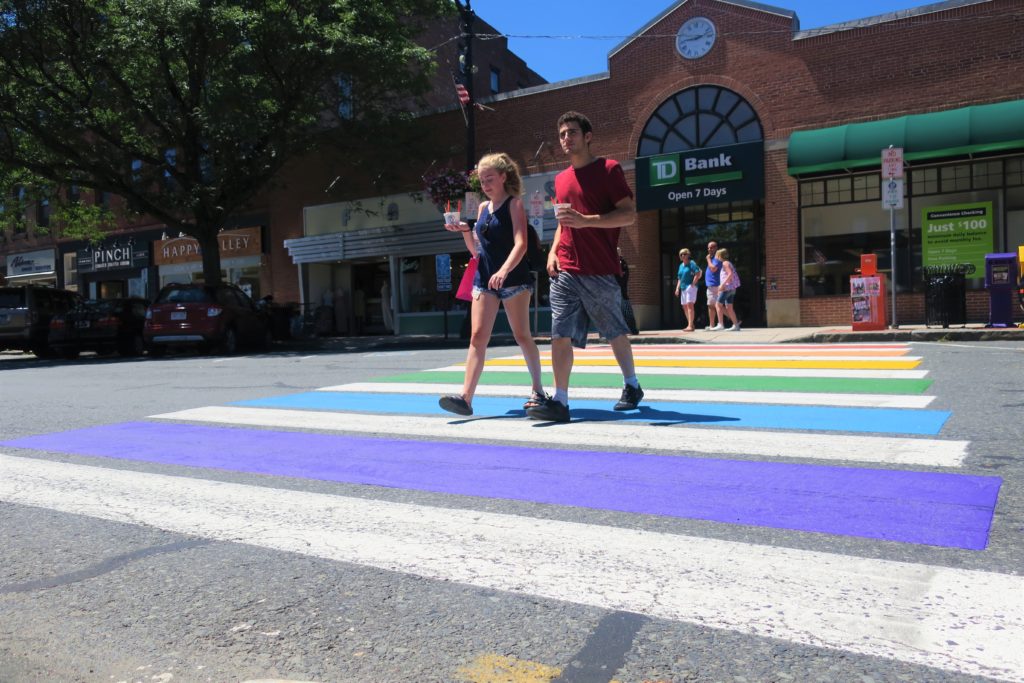
Instead of simply adding up the lost productive time of people stuck in congestion and using that number to justify bigger and meaner streets, we could be creating places where we live at a more human scale—where getting out into the community doesn’t require covering so much distance that a car is necessary for every single trip. Instead of subsidizing commuter traffic and parking, we can reorient our spending toward creating great places that serve as economic engines in the financial sense because people spend more time being there and less time sitting behind a steering wheel.
We have to do better. At the very least, we must take a wider view and place more consideration on secondary consequences – the externalities – of our transportation investment decisions. We need to distribute the right-of-way more economically. We must have compassion for those that are not able or willing to own cars, share public space more equitably, and stop sacrificing places for the sake of one-dimensional auto-centric mobility.

